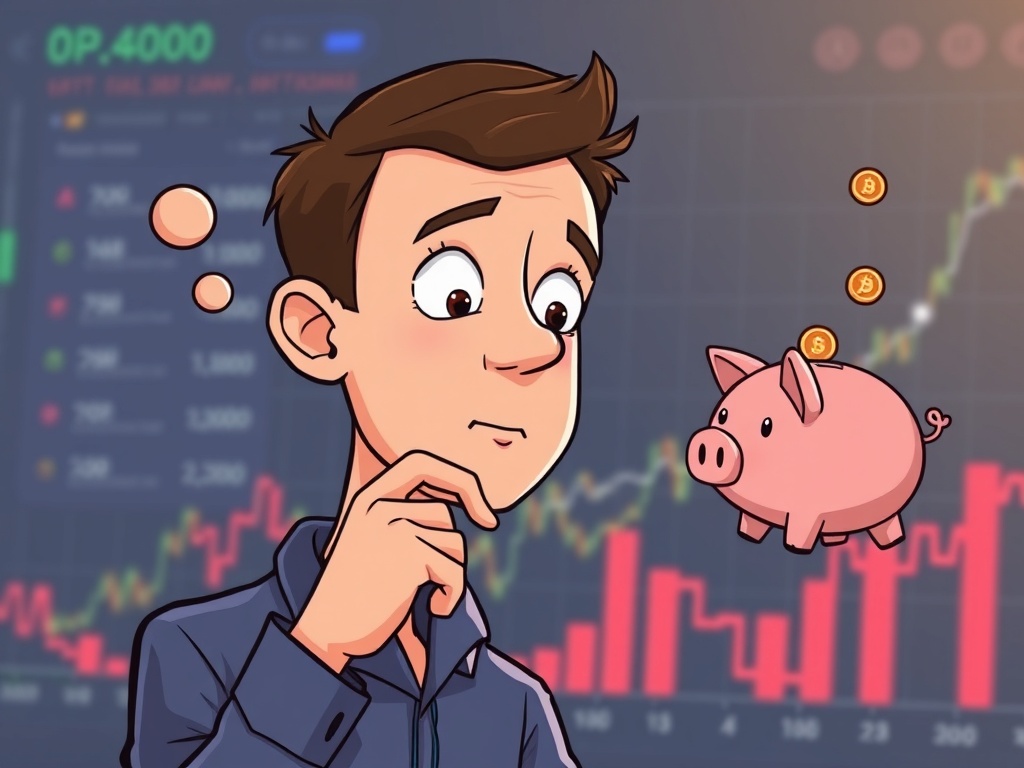Prediction Markets’ Crucial Flaw: Why Vitalik Buterin Demands Interest Payouts
0
0

BitcoinWorld

Prediction Markets’ Crucial Flaw: Why Vitalik Buterin Demands Interest Payouts
Ethereum co-founder Vitalik Buterin recently dropped a significant insight that has the crypto community buzzing. He argues that current prediction markets are fundamentally flawed when it comes to effective hedging, primarily because most platforms don’t offer interest payouts. This isn’t just a minor oversight; it’s a crucial missing piece that impacts their utility and broader adoption, according to Buterin’s recent Farcaster post, as The Block reported.
What’s Missing from Today’s Prediction Markets?
Imagine you have money, and you want to use it to bet on future events, perhaps to offset potential losses elsewhere – this is hedging. However, when you put your funds into most leading prediction markets, that money simply sits there. Buterin points out a key issue: users forgo a secure 4% annual yield, which is readily available on dollar-based assets. This “opportunity cost” means that by participating in a prediction market, you’re essentially losing out on potential earnings you could get elsewhere. It’s like choosing to keep your money under a mattress instead of in a savings account that pays interest.
- Opportunity Cost: Users lose out on potential passive income.
- Reduced Incentive: Less attractive for long-term hedging strategies.
- Inefficient Capital: Funds are not actively earning, making the platform less appealing.
Why are Interest Payouts Crucial for Effective Hedging in Prediction Markets?
Hedging is all about managing risk. If you’re using a prediction market to hedge against a future event, you want your capital to be as efficient as possible. Without interest payouts, the act of hedging becomes less appealing. For instance, if you’re betting against a certain outcome to protect another investment, your capital is tied up without earning anything. This makes the overall strategy less profitable and less compelling compared to traditional financial instruments that often provide some form of yield. Buterin believes that resolving this issue would unlock a wave of broader hedging scenarios, leading to significantly greater trading volumes across these platforms.
Are Current Prediction Markets Falling Short? The Polymarket Example
Buterin’s observations aren’t just theoretical; they align with recent market trends. For example, Polymarket, one of the leading platforms, saw its July volume decline to $1.06 billion from $1.16 billion in June. While this isn’t solely attributable to the lack of interest payouts, it highlights a potential struggle in sustaining engagement and growth. If users perceive a better return on their capital elsewhere, they will naturally gravitate towards those options. The current design of many prediction markets inadvertently creates a barrier for serious hedgers and long-term participants.
Unlocking Revolutionary Potential: What If Prediction Markets Evolved?
Imagine a future where prediction markets integrate interest-earning mechanisms. This transformative change could revolutionize how people approach risk management and speculation. Users could participate in markets, hedge their positions, and still earn a yield on their staked capital. This dual benefit would dramatically increase the attractiveness of these platforms, drawing in a wider audience and fostering more sophisticated trading strategies. The potential for increased trading volumes and more robust market participation is immense, moving prediction markets closer to becoming a truly powerful financial tool.
In essence, Vitalik Buterin’s critique offers a vital roadmap for the evolution of prediction markets. By addressing the fundamental economic incentive of interest payouts, these platforms can transcend their current limitations and unlock a future where they serve as truly effective and appealing tools for risk management and speculation. This isn’t just about adding a feature; it’s about fundamentally rethinking their design to align with user expectations and financial realities, ultimately driving their growth and utility in the decentralized finance ecosystem.
Frequently Asked Questions (FAQs)
Q1: What is the main issue Vitalik Buterin raised about prediction markets?
A1: Vitalik Buterin argued that most leading prediction markets are poorly designed for hedging because they fail to offer interest payouts on users’ staked capital, leading to an opportunity cost.
Q2: Why is the lack of interest payouts a problem for hedging?
A2: When users participate in prediction markets, they forgo a secure annual yield (e.g., 4% on dollar-based assets). This makes hedging less appealing as their capital is tied up without earning any passive income, making the strategy less efficient.
Q3: How would interest payouts benefit prediction markets?
A3: Integrating interest payouts would make prediction markets more attractive for hedging and speculation. It would reduce the opportunity cost for users, likely driving greater trading volumes, fostering broader hedging scenarios, and increasing overall platform engagement.
Q4: Did Buterin’s remarks coincide with any market trends?
A4: Yes, his remarks coincided with Polymarket’s July volume declining to $1.06 billion from $1.16 billion in June, suggesting that current market designs might be struggling to retain user capital and engagement.
Q5: What is “opportunity cost” in this context?
A5: Opportunity cost refers to the potential benefit that a person misses out on when choosing one alternative over another. In this case, it’s the 4% annual yield users could earn on dollar-based assets but forgo by putting their money into a prediction market without interest.
Q6: What does “hedging” mean in the context of prediction markets?
A6: Hedging means making an investment to reduce the risk of adverse price movements in an asset. In prediction markets, it would involve taking a position to offset potential losses from another investment or future event.
Share this insightful analysis! If you found Vitalik Buterin’s perspective on prediction markets and the importance of interest payouts as compelling as we did, spread the word. Share this article with your network and spark a conversation about the future of decentralized finance and risk management!
To learn more about the latest crypto market trends, explore our article on key developments shaping Ethereum price action.
This post Prediction Markets’ Crucial Flaw: Why Vitalik Buterin Demands Interest Payouts first appeared on BitcoinWorld and is written by Editorial Team
0
0
 Manage all your crypto, NFT and DeFi from one place
Manage all your crypto, NFT and DeFi from one placeSecurely connect the portfolio you’re using to start.




